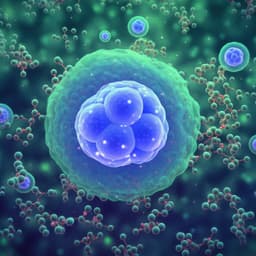
Biology
Enhancing bioreactor arrays for automated measurements and reactive control with ReacSight
F. Bertaux, S. Sosa-carrillo, et al.
Discover ReacSight, a revolutionary system that enhances small-scale bioreactor arrays, offering real-time control over vital microbial processes! This innovative research by François Bertaux, Sebastián Sosa-Carrillo, Viktoriia Gross, Achille Fraisse, Chetan Aditya, Mariela Furstenheim, and Gregory Batt demonstrates state-of-the-art techniques for optogenetic control, competition assays, and dynamic culturing. Join us to explore the future of microbial research!
Playback language: English
Related Publications
Explore these studies to deepen your understanding of the subject.







